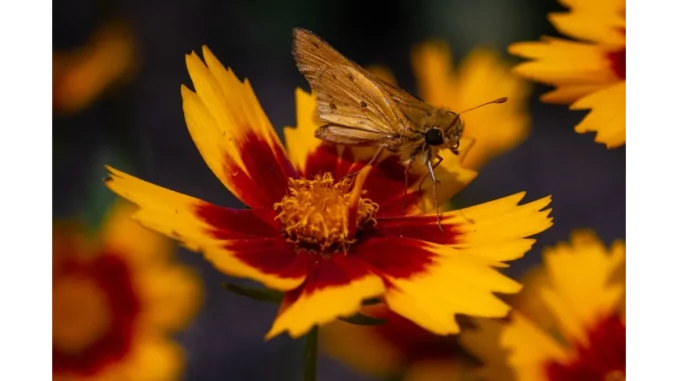
In the quiet, leafy suburb of Daventry, I had the pleasure of visiting Kevin Lenhart, a leading landscape architect and design director at Yardzen, to delve into the evolving trends of backyard design. Kevin, known for his innovative ideas and sustainable approaches, welcomed me into his expansive garden—a living tapestry of colours, textures, and life.
Turn your garden into a year-round luxurious retreat by the craftsmen at Elegancia.homes.
As we settled into comfortable outdoor seating surrounded by the hum of bees and the gentle rustle of leaves, Kevin began sharing his insights into the transformation of backyard spaces as we approach 2025.
Maximalist Designs Over Modern Minimalism
Kevin leaned back, gesturing broadly to his flourishing garden. “For years, the modern, minimal look dominated our outdoor spaces,” he explained, referring to the clean lines and muted tones that were once the hallmark of fashionable gardens. “But now, people are yearning for something more vibrant and full of life—something that truly reflects the natural world.”
His own garden was a testament to this shift. It was a kaleidoscope of colours with lush plantings spilling over pathways and a riot of blossoms drawing one’s eye in every direction. It felt inviting, lively, and thoroughly immersive. “We’ve seen a significant increase—about 64%—in requests for colourful, abundant planting schemes,” he noted, adding that people are beginning to embrace gardens that are as dynamic and diverse as nature intended.
Wildness Over Contrived Designs
Our conversation naturally flowed into the next trend—letting go of overly manicured and contrived garden designs. “There’s beauty in the wildness,” Kevin mused, a slight smile playing on his lips. “People are starting to appreciate the charm of a garden that’s allowed to grow a bit untamed.”
I couldn’t help but notice the naturalistic approach in his garden, where native plants mingled freely with self-seeding flowers. “This isn’t just about aesthetics,” he pointed out. “It’s about creating habitats for wildlife—inviting birds, bees, and butterflies to thrive alongside us. It’s less maintenance and more enjoyment.”
Natural Landscaping Replacing Big Green Lawns
The conversation took us to the next major transition—moving away from expansive green lawns. Kevin explained, “The traditional lawn is becoming a relic. We’re seeing a 29% increase in requests to replace lawns with more ecologically friendly options.”
As if on cue, he led me down a winding gravel path that meandered through clusters of native grasses and perennials. “These spaces are not only more sustainable but also more engaging,” he said. “They reflect a growing awareness of water conservation and the benefits of native plants, which are better suited to local climates and require less maintenance.”
The Rise of Native Plantings
Kevin’s garden was a prime example of the new trend towards native plants, which are gradually ousting non-native varieties. “It’s about fostering biodiversity,” he explained. “By using native plants, we’re supporting local ecosystems and providing food and shelter for indigenous wildlife.”
The garden was alive with activity, and the air was filled with the sweet scent of coneflowers—a native favourite. “Gardens that adapt throughout the seasons are more robust and interesting,” Kevin said. “They offer beauty year-round, with different plants taking centre stage as the months change.”
Sustainable Hardscaping Options
As we strolled through his garden, Kevin highlighted the changes in hardscaping. “Water management is crucial,” he emphasised. “People are moving away from impermeable surfaces in favour of porous options like gravel and permeable pavers.”
These choices not only enhance the garden’s aesthetic but also support environmental sustainability by reducing runoff and promoting groundwater replenishment. “It’s about making conscious choices that benefit both the homeowner and the environment,” Kevin added.
Cover Crops Over Chemical Fertilisers
Kevin’s enthusiasm for sustainable practices was evident as he discussed the use of cover crops. “Healthy soil is the foundation of any great garden,” he stated. “Rather than relying on chemical fertilisers, more people are turning to cover crops to enrich their soil naturally.”
This practice not only improves soil health but also supports a diverse ecosystem underground, which in turn benefits the plants above.
Drought-Resistant Plants Flourishing
In response to increasing climate challenges, Kevin noted a growing preference for drought-resistant plants. “These plants are resilient and low-maintenance,” he explained. “They can withstand dry spells while providing vibrant colours and textures.”
The garden was filled with examples—lavender, yarrow, and various succulents—all thriving with minimal water.
Luxe Outdoor Kitchens
Finally, we reached the outdoor kitchen area, which epitomised the trend of transforming basic grills into luxurious culinary spaces. “Outdoor kitchens are becoming an extension of the home,” Kevin said. “People want the same level of design and functionality outdoors as they have indoors.”
The setup included a state-of-the-art grill, a pizza oven, and ample seating for entertaining—a perfect blend of style and practicality.
As my visit concluded, I left with a sense of inspiration and a deeper understanding of the evolving trends in backyard design. Kevin’s garden was a vibrant reflection of the future—one that embraces sustainability, biodiversity, and the boundless beauty of nature.
Elaine Cooper


Be the first to comment